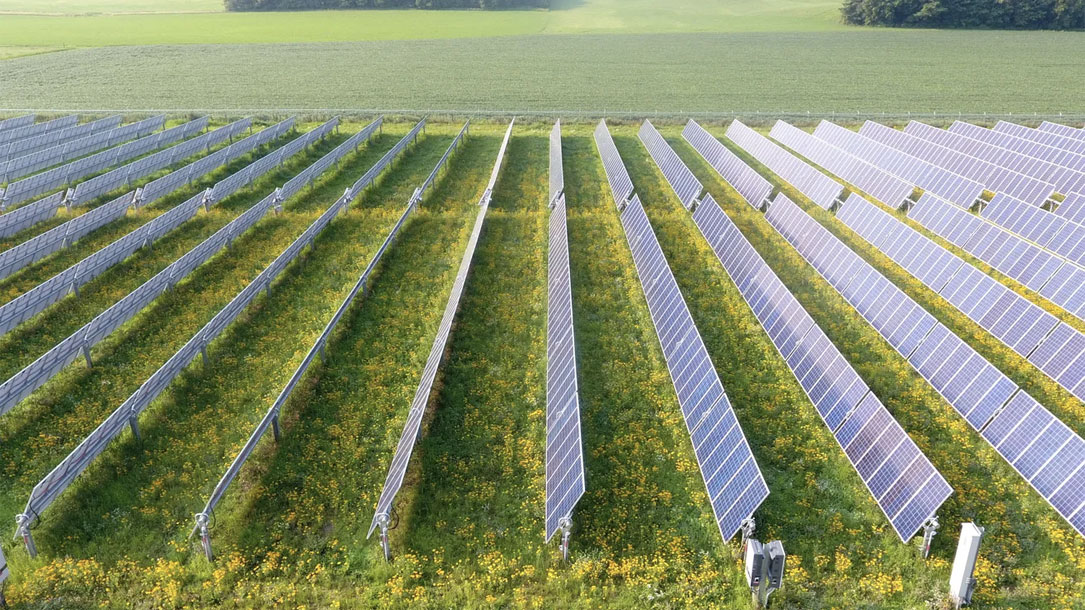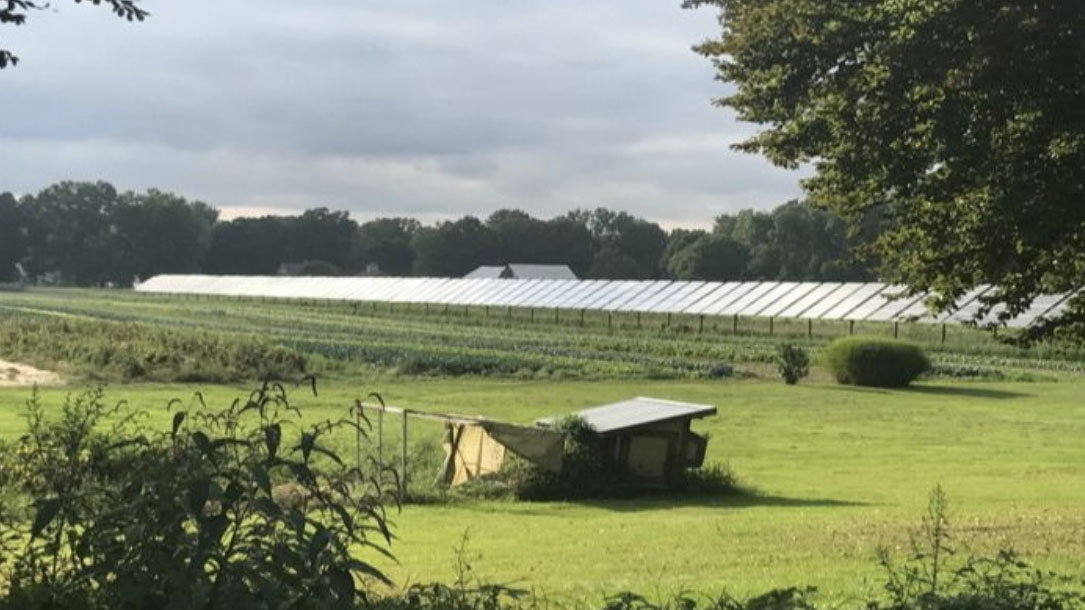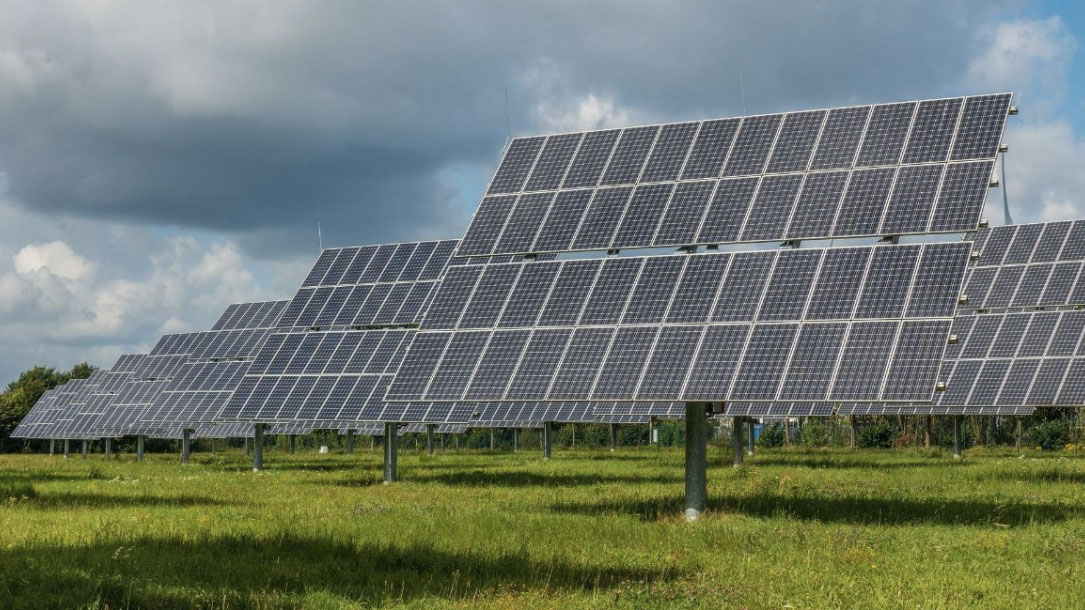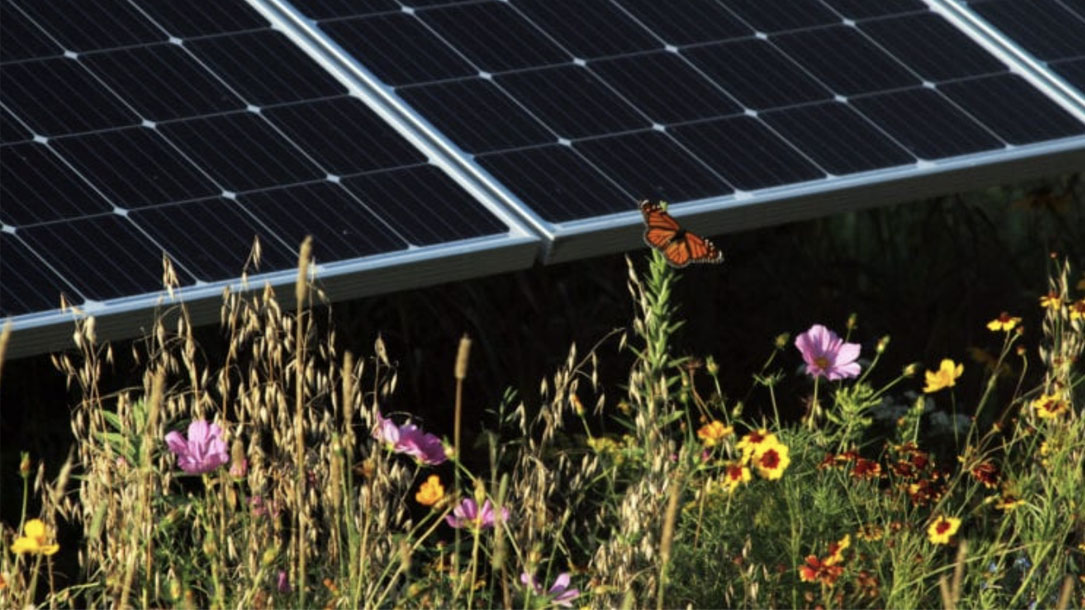Home > Climate News >

The Center for Pollinators in Energy
Bees, monarchs, and other critical pollinators are disappearing, and scientists agree that loss of habitat is a primary concern. Because the United States solar industry first took off in the desert Southwest, a standard practice for the land on solar sites is gravel and/or monocrop lawn grass.
That changed in 2016 when Fresh Energy, Audubon Minnesota, and the Minnesota Corn Growers worked with agricultural and business leaders to establish the nation’s first statewide standard for vegetation on solar sites…

‘A magical solution’: solar developers planting flowers that could help save butterflies and bees
For more than a century, Logansport’s electricity was generated using gritty black coal. Now, its latest generating facility will feature 80 acres of solar panels, and something far more attractive—flowers.
Solar projects with habitats such as these, called pollinator-friendly solar projects, have been launched in 20 states, according to the Center for Pollinators in Energy. At least three new pollinator-friendly solar projects have been announced in Indiana this year.
Habitat loss and exposure to chemicals such as pesticides have killed off large portions of bee, butterfly, fly, and beetle populations. Numbers of honeybees, one of the most widely tracked pollinator species because of their contributions to the food supply, are falling by as much as 30 percent each winter in the U.S. and in Indiana…

Smart Solar Siting for New England: free webinar series
Join American Farmland Trust, Acadia Center, Conservation Law Foundation, Vote Solar, and Vermont Law School for a four-part webinar series, as we share outcomes from our joint two-year project seeking to reduce conflicts over the siting of solar facilities…

Beaufort County Solar Facility first in the state to be permanently protected
In a first of its kind deal for South Carolina, Beaufort County Open Land Trust announced the closing of a conservation easement on land owned by an affiliate of Adger Solar LLC, on which the Seabrook solar energy generation facility in Beaufort County resides.
The 72-megawatt facility, owned by Dominion Energy, is sited on a rural 628-acre property and is the first designated solar energy facility in South Carolina to be on land protected permanently by a conservation easement. The project is expected to be in service in 2020 and will provide enough energy to power 9,000 homes for the next 25 years. The agreement allows for the land to be used for farming, timber, or other rural uses if energy production ends.
“Our landscape in Beaufort County is changing and how we think about land use is changing too. What was once a tomato farm will now help support the growing clean energy industry,” commented Kristin Williams, executive director, Beaufort County Open Land Trust. “Our goal is to ensure that over the long-term, these sites vulnerable to residential, commercial, and industrial development, are permanently protected…”

Farmland and Compatible Solar Webinar Series
Farmland is a critical resource in our country, particularly in areas that are heavily forested or developed. American Farmland Trust recently released the Farms Under Threat report, documenting those challenges.
Yet climate change is the most significant threat to conservation we have ever faced. Rather than remove forests, many are locating solar fields on agricultural lands. Can it be done well? Yes.
Find out how in this webinar series focusing on smart solar siting, balancing solar siting with conservation, growing the solar market, and turning state and local priorities into sound policy. While this is focused on New England, there will be many transferable concepts for wherever you are located.
Webinars are free and running on September 23, September 30, October 7, and October 15.

Michigan opens 3.3M farmland acres to bee-friendly solar projects
Michigan Democratic Gov. Gretchen Whitmer on Monday announced an executive decision that frees up 3.3 million acres of farmland protected under the state’s Farmland and Open Space Program to solar development. Previously, the land was allowed to host wind turbines and oil and gas exploration, but solar was historically restricted because it was considered to have a larger footprint…

Want to get involved with solar grazing?
he American Solar Grazing Association (ASGA) was founded to promote grazing sheep on solar installations.
ASGA members are developing best practices that support shepherds and solar developers to both effectively manage solar installations and create new agribusiness profits…

The evolution of rural solar: from panel monocrops to multiple land uses
In farming, companion planting of certain crops in close proximity can provide an array of benefits: from pest control, to flavor enhancement, to increased productivity.
The same concept can be applied to rural solar projects, which have the opportunity to integrate with other land uses, such as crops or pollinator-friendly plantings, and create win-win outcomes for rural communities…
Recognizing the increasing compatibility of solar with rural land conservation, Michigan recently amended its farmland preservation rules to allow solar development on protected farmland, provided that the solar project met the state’s pollinator-friendly standards…

Smart Solar Siting partnership project for New England
American Farmland Trust’s Smart Solar Siting Partnership Project for New England started as a two-year effort to build an influential, ongoing, multi-stakeholder coalition supporting recommendations that advance smart solar siting policies and programs in New England states. This is a joint effort to accelerate the expansion of renewable solar energy facilities while maintaining New England’s most productive, resilient farmland and forest land and strengthening its regional food systems.
Check out their program and resources. Your land trust and community may be able to model a similar approach.

Four ways land conservation mitigates the impact of climate change
This land trust is working to conserve land using a number of different strategies. They own farmland, wildlife habitat, and hold conservation easements. They run educational programs and own a farm (offering food to the community). Their reach is wide—and they are adapting and responding to calls for greater impact and the need to slow down climate change.
Check out this blog post as an example of how you could help your community see the importance of land conservation as part of the solution…












